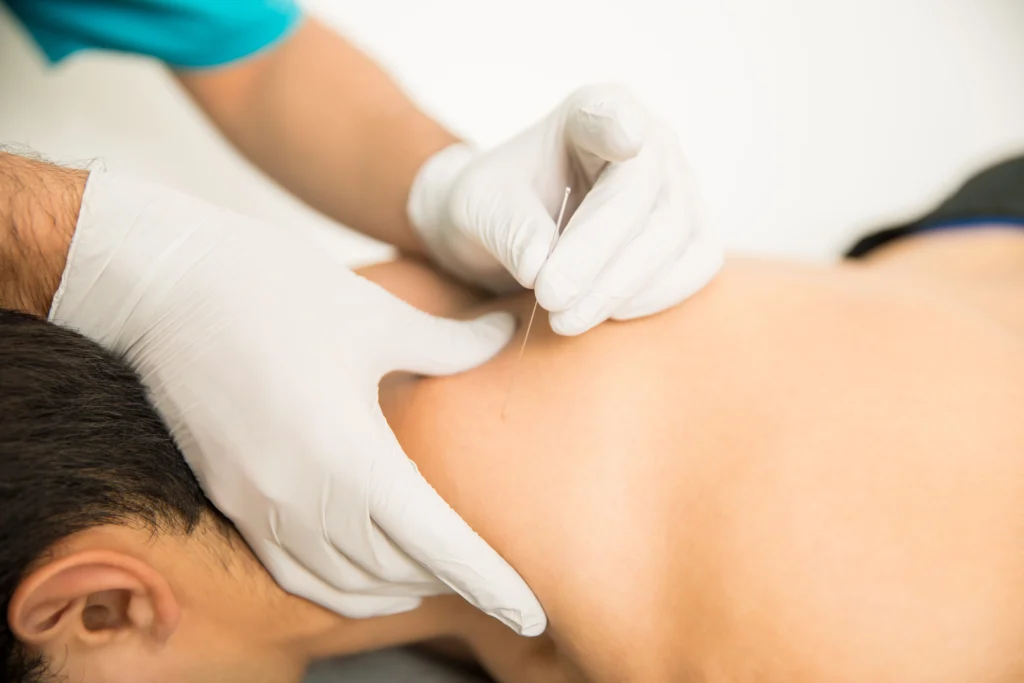![]() +971 6 522 6368
+971 6 522 6368 ![]() +971-56-994-6523
+971-56-994-6523 ![]() info@resalahphysio.com
info@resalahphysio.com
Dry Needling

Dry needling is a therapeutic technique used by some physiotherapists to treat myofascial pain and dysfunction. It involves the insertion of thin needles into trigger points or tight bands of muscles to stimulate a healing response. Unlike traditional acupuncture, which is rooted in Chinese medicine and focuses on balancing the flow of energy (qi), dry needling is based on Western medicine principles and targets specific anatomical structures.
Here are some key points about dry needling in physiotherapy:
Trigger Points: Dry needling is often used to target trigger points, which are hyperirritable spots in skeletal muscles associated with palpable nodules or tight bands of muscle fibers. These trigger points can contribute to muscle pain and restricted movement.
Mechanism of Action: The exact mechanisms of how dry needling works are not fully understood. However, it is believed to produce a local twitch response in the muscle, leading to muscle relaxation and improved blood flow. It may also stimulate the release of endorphins, which are natural pain relievers.
Pain Relief: Dry needling is used to alleviate pain and improve range of motion. It can be particularly effective for conditions such as chronic pain, muscle spasms, and myofascial pain syndromes.
Conditions Treated: Physiotherapists may use dry needling as part of a comprehensive treatment plan for various musculoskeletal conditions, including but not limited to:
- Muscle Strains: To promote healing and reduce muscle tightness.
- Joint Pain: Especially when associated with muscle tightness or trigger points.
- Tendinopathies: To address trigger points in the affected muscles.
- Chronic Pain Syndromes: Such as fibromyalgia.
- Individualized Treatment: Dry needling is often used in conjunction with other physiotherapy techniques, exercises, and interventions. The choice to use dry needling depends on the individual patient’s condition, preferences, and response to treatment.
